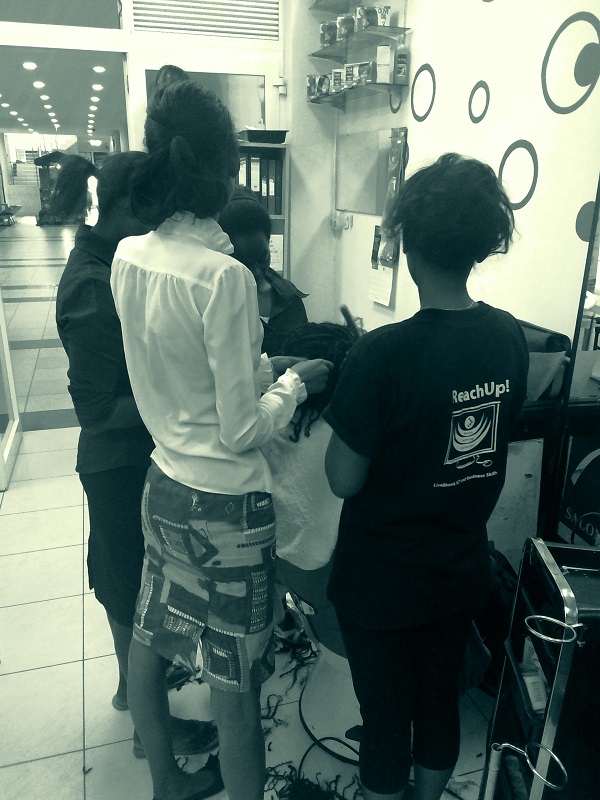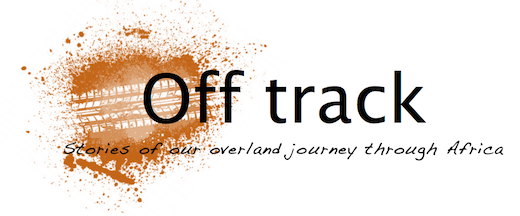For female readers only – or for those who understand black hair
If men do decide to read this post: you do so at your own risk, so don’t throw any accusations of being utterly superficial at me afterwards… I count on my female friends that they regard this story in the right context 🙂
So we are in Kigali, the capital of Rwanda. There are interesting, impressive things to write about this country, and I will do so in the next post. But for now I would like to share this little pleasure with you: my visit to a black-hairdresser.
Those who have know me quite some time, are aware of the struggle I have had with my hair all my life. The first 14 years my mom battled for me, armed with comb, scissors and coconut fat, later the hairdresser took over. I always went to the hairdresser unenthusiastically. Why? Because these parlours are the domain, the arena of bossy, big, know-it-all Surinamese women who never, ever let an opportunity pass to critisize. ‘Je haar is sooo drooog! Je moet meer vet zetten!’ while pulling it, showing the dry, hay-like top of my head to their colleagues. ‘You should have come ages and ages ago!’ shouting through the salon, while shaking their head in disapproal. The other clients looking from under their curl pins, seeming to think ‘I don’t understand that child either, how did her mother raise her?!’ When we could, my sister Pauline and I would go together, that way we felt a bit stronger somehow. And always when we left, we promised to do better this time.
It was only after I reached my thirties, that I was finally able to walk in there confident enough not to be bothered by getting the evil-hairdresser-eye. It gave me strength to say in my head ‘no, I don’t soak my hair in hair mayonnaise every weekend, and no, I don’t blow-dry it every day. So what?’ I know, this is a very personal and very sad fact about me, hehe.

4 Months of travelling got the better of my furry friends: it was dry as never before, it would only stand upright, despite the bright yellow ‘hair food’ fat I got at an Ethiopian supermarket. I even thought that the Rwandan women were looking at the spot over my forehead strangely, but that could have very well been a product of my own insecure imagination.
The women here have the typical African do: they weave (the ones with lots of money), they straight (the ones with some money) and they wear wigs (the ones without money). A fluffy do like mine? Nobody wears that.
So, time for the hairdresser. I walked into a salon and was greeted by a trendy looking fellow, asking what he could do for me. I wasn’t sure if he knew S-curl, the texturiser that I used to get every 2 months. But my hairguy knew the drill and needed no explanation whatsoever. ‘How long it will take? Only 30 minutes, madam’. 30 minutes?! In Amsterdam, you first have to wait 1 hour for your turn, than it takes another 2 to 3 hours before it is finished. I recognised his skill when he gently put a layer of vaseline on my forehead. (Extra explanation: the cream that is used is such a nasty chemical, that if you leave it in too long or when it drips on your forehead, it burns your skin. The vaseline is for protection, but the dodgy salons often skip that detail). In black hair land the starting touch of the Pros. I felt in afro-heaven.
Cornelius dropped in a few seconds to ask how much money he should get at the ATM to pay for me (like I said, heaven) and suddenly my neighbour, a beautiful Rwandan woman, said in fluent german: ‘sprichst Du Deutsch? Ich bin aus Augsburg’. Turned out she was married to a german guy she met in Edeka (sort of german Albert Heijn) while on holidays. She was getting a weave and judging by the expensive watch on her arm and the Louis Vuitton between her high heeled feet, she got the high quality real hair.
For those of you who don’t know what a weave is: it is wavy, long hairpieces that are stitched to your own hair, that remains fully covered. Sort of like a wig, but then without the risk of it flying away in stormy weather. Normally when black women straight their hair it is without curls, but it isn’t flexible. It is fixed, even when it is long, and when you turn your head, you hair does the same. Imagine that helmet of Darth Vader, but then in hair. Imagine removing the rubber band from your ponytail, and still the ponytail keeps its shape, it doesn’t fall on the shoulders.
You see a black woman with wavy long hair, the type of hair that dances in the wind? That is a weave. No black woman has hair like that. Beyonce? A weave. Tyra Banks? A weave. And my neighbour definitely had a beyonce-like hairpiece going on.
I asked her where she got the hair from. ‘Switzerland. They sell good hair there. 500 Euros, imported from India. In Augsburg they haven’t even heard of the weave so I have to go abroad’. I nodded understandingly. Real hair costs money, and you don’t want any cheap synthetic hair: Pauline explained that on Aruba, these women are called ‘Syn’thia’. Look at that Syn’thia over there’. Being a Syn’thia is something that every black woman wants to avoid.

Behind me, there were four girls detangling the rasta braids from a womans head. It surprised me to see that where normally the Africans aren’t the experts on doing things efficiently, here they worked together smoothly and within no time all her rasta braids were piled on the floor.
My hairguy worked through the steps without pausing. A nice difference to the salons with the Surinamese women: for them, going to the salon is mainly a social event and sometimes the hairdressers talk so much, are so caught up in their gossip that they forget to cut or put you under the hair dryer for another hour (although you just finished that first hour and not only is your hair dry, but also your mouth and eyes and your armpits are sweating from overheating).
Without any criticism or rolling eyes, the hairguy had me leaving the mall with shiny and wavy hair, only setting me back 17 Euros.
It was bliss to be among hair-equals for once, to be understood. This day in Kigali, Rwanda, was a very good day.
